-
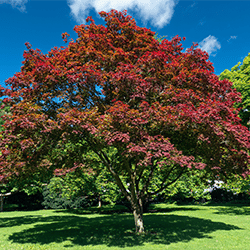
Elm -
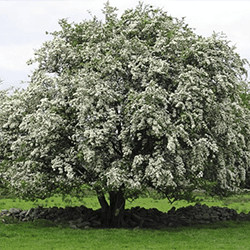
Hawthorne -
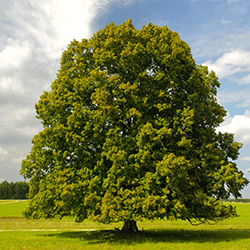
Linden -
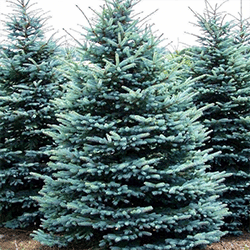
Spruce -
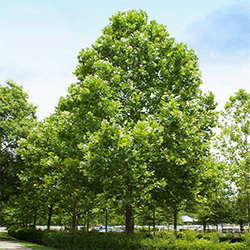
Sycamore
You do not need to wait until the spring to add a tree to your landscape. Planting in the fall will give your tree an extra growing season before the stress of summer. The combination of cooler temperatures and fall rain will allow it to establish their roots, making it easier to adjust to extreme heat or drought in the summer.
You may be concerned about a young tree withstanding a harsh winter. Trees go dormant in the winter. This “sleep” state slows down the tree’s growth, energy consumption, and metabolism. You can consider it is safe to plant trees until the ground is frozen solid. This generally occurs after the first hard frost.
The Arbor Day Foundation has Tree Care Tips & Techniques to help you care for your new tree. Place a two to three-inch ring of mulch around the base of your tree but do not pile it against the trunk. Water your tree right after planting and continue to water as needed through the fall. Dig a 1-inch hole near your tree and feel the soil. Your tree does not need water if it is moist to the touch.
Once you decide to add a tree this fall, make sure you plant the right tree in the right place. Before planting, evaluate your space to make sure it will be suitable for your tree as it grows. Consider how much sun, shade, and moisture the tree will get at the planting site.
Here are five trees to consider for fall planting:
- Elm
Elm trees need full sun or partial shade and damp soil. These trees are good choices for areas near sidewalks and streets, but they can cause some cracking in sidewalks. When you are planting in the fall, you should wait until the following spring to fertilize. Elms are large trees and can grow up to 120 feet tall so be sure you have the space for it.
- Hawthorn
Hawthorn trees are known for their beautiful white spring flowers. These trees grow to a medium height of about 30 feet and add wonderful fall color to any property. The trees are deer-resistant which makes them an excellent pick for rural tree planters. These trees like well-drained soil and full sun. Trees can be spaced closer together but thrive best when planted 20 to 30 feet apart.
- Linden
Linden trees produce wonderful fall foliage with rich, golden leaves. Thespruce.com has 12 Trees With Brilliant Fall Color for even more options if this is a top criterion for you. Linden trees prefer full sunlight but can tolerate partial shade. Mulch around the tree to add essential nutrients to the soil and improve the odds that the newly planted tree will survive the winter. Like the Elm, when you are planting in the fall, you should wait until the following spring to fertilize.
- Sycamore
Sycamore trees are truly hardy. You can plant them just about anywhere in any kind of soil and they will thrive. These trees are massive, growing up to 100 feet tall with an equal spread. Their trunks grow up to ten feet in diameter. Like the Elm, make sure you have the space! Be sure the tree gets plenty of water.
- Spruce
Like sycamore trees, spruce trees are incredibly hardy and can handle harsh conditions. They make excellent windbreaks and shelterbelts and grow in a variety of colors, including yellow and silvery blue. They thrive well in very cold environments and poor soil. By spring, you will see plenty of new growth on your spruce tree.
The experts at Patera Landscaping can help you pick the perfect tree to add to your yard this fall. Contact us today!